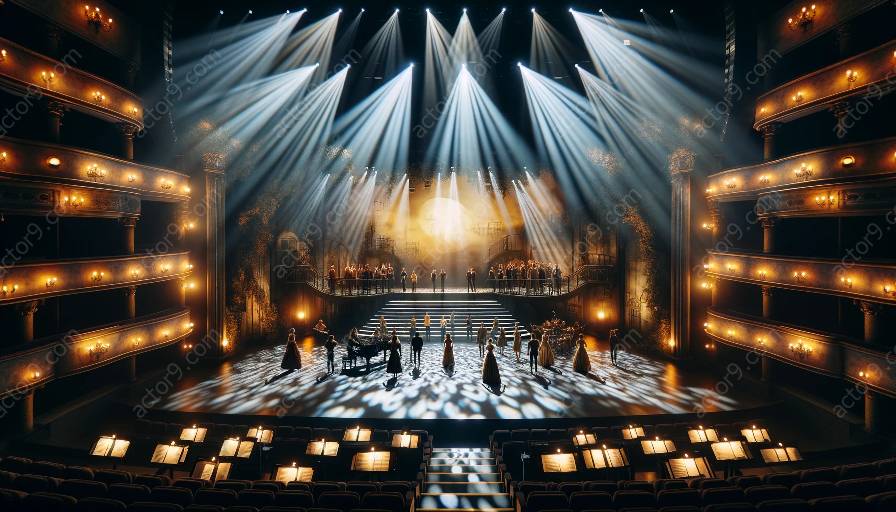Lighting plays a crucial role in creating visual focal points in musical theatre. A well-designed lighting plan can draw the audience's attention to specific areas on stage, highlight important characters or scenes, and enhance the overall storytelling. In this article, we will explore the art of lighting design in musical theatre, focusing on techniques for creating visual focal points.
Understanding the Role of Lighting in Musical Theatre
Lighting design in musical theatre is much more than simply providing illumination. It is an art form that requires a deep understanding of storytelling, mood setting, and visual composition. A skilled lighting designer knows how to use different lighting techniques to guide the audience's focus and create a captivating and immersive experience.
Key Elements of Lighting Design in Musical Theatre
Before delving into specific lighting techniques, it's important to understand the key elements of lighting design in musical theatre. These include:
- Visibility: Ensuring that the audience can see the performers and the set clearly.
- Mood: Creating a specific atmosphere that complements the narrative and emotional content of the production.
- Focus: Directing the audience's attention to specific areas on stage to emphasize important moments or characters.
- Composition: Using light to sculpt and frame the stage, creating visually compelling scenes.
Lighting Techniques for Visual Focal Points
Now, let's explore some of the most effective lighting techniques for creating visual focal points in musical theatre:
Spotlighting
Spotlighting is one of the most commonly used techniques for drawing attention to a specific performer or part of the stage. By using a narrow beam of light, the lighting designer can isolate a particular actor or object, creating a visual focal point that stands out from the surrounding action.
Color and Intensity
The use of color and intensity can dramatically alter the mood and focus of a scene. By changing the color and brightness of the lights, the designer can shift the audience's emotional response and direct their attention to different areas of the stage.
Gobos and Texture
Gobos are stencils or patterns placed in front of a lighting fixture to project shapes, textures, or patterns onto the stage. By using gobos, a lighting designer can add depth and visual interest to the set, creating captivating focal points that enhance the overall visual experience.
Movement and Effects
Dynamic lighting effects, such as moving lights, gobo rotations, and changing patterns, can create a sense of movement and energy on stage. By incorporating these techniques, the lighting designer can guide the audience's focus and create visually stunning moments that support the musical theatre production.
Integration with Musical Theatre Performances
Each of these lighting techniques plays a crucial role in enhancing the storytelling in musical theatre performances. Whether it's highlighting a poignant moment, creating a dramatic reveal, or setting the mood for a musical number, the art of lighting design adds depth and visual impact to the production.
Conclusion
Lighting techniques for visual focal points in musical theatre are essential for creating immersive and engaging performances. By understanding the fundamentals of lighting design and incorporating techniques that draw attention to key elements on stage, lighting designers can elevate the visual storytelling of musical theatre productions, captivating audiences and enhancing the overall theatrical experience.




































